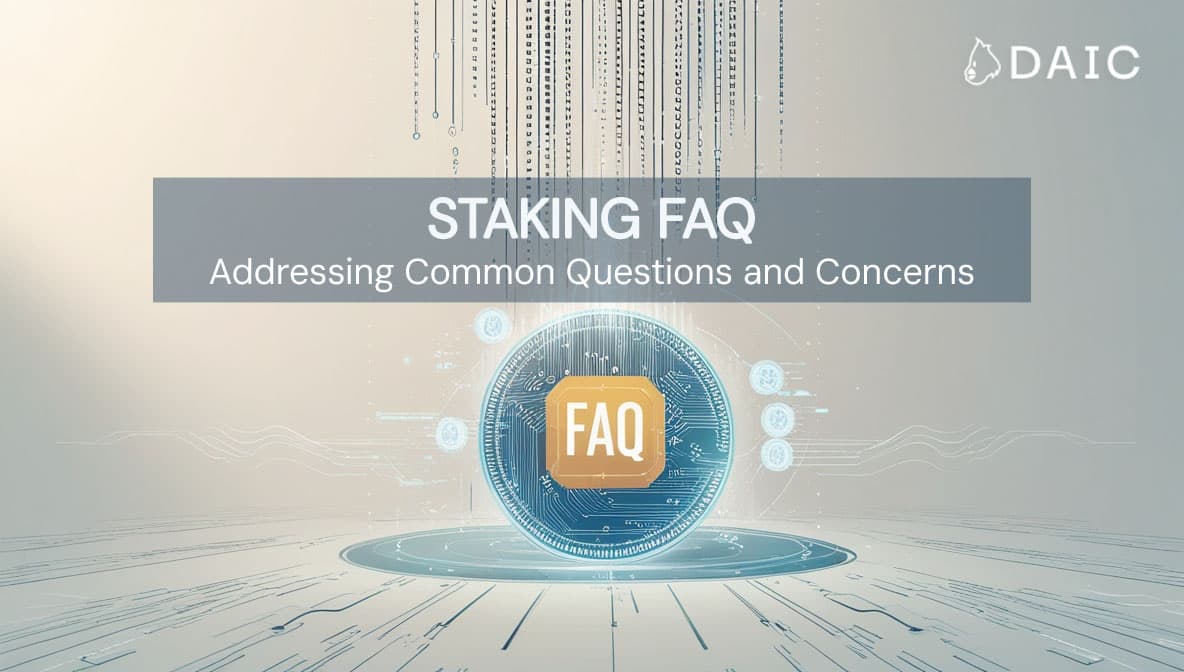Blockchain technology has remained one of the key corners of digital innovation, promising secure and transparent solutions for a range of industries. At the core of such advances are consensus mechanisms - ingenious protocols that ensure agreement concerning the state of the blockchain by the different participants in the network. This article goes over the development of consensus mechanisms, focusing on the growing importance of Proof of Stake and how this influences the entire blockchain ecosystem in the most radical ways possible.
Key Takeaways
- Proof of Stake (PoS) consensus overcomes limitations of Proof of Work (PoW), energy inefficiency and low scalability.
- Staking unlocks gateways for investors, encouraging active participation in the security and management of the network.
- The transition of Ethereum to PoS via Ethereum 2.0 highlights its potential for complex blockchain networks.
- The trend of sustainability in tech is well aligned with the PoS approach.
The Origins of Consensus Mechanisms
The history of blockchain technology is a chronicle of relentless innovation in the digital realm: from the pursuit of making a system works without intermediaries, where trust was established not through central authorities but through the rules - consensus that governs separate entities.
The first successful manifestation of that vision came with the emergence of blockchain Bitcoin in 2009, created by Satoshi Nakamoto, who introduced the Proof of Work (PoW) consensus to the world. The PoW, based on heavy computational resources for insuring the network security, had formed the backbone on which this new, decentralized financial system would thrive.
However, its known inefficiencies in energy use and low scalability started off a wave of research and development of more efficient alternatives. Innovators further pushed the boundaries, finding new ways to improve efficiency, security, and governance. It was the birthplace of Proof of Stake, which shifted the paradigm from power-consuming computation to a system where investors could take part in the network validation process. PoS answered environmental concerns linked to PoW but also unlocked new paths for scalability and speed in relation to transaction processing.
The following are some properties of consensus which are possible in Proof-of-Stake and impossible or hard to achieve in Proof-of-Work :
- Scalability: PoS improves scalability with a higher transaction processing speed and lower fees in comparison to PoW networks.
- Economic Security: In Proof of Stake, validators have an economic set of incentives to behave honestly. This economic model allows for incentivized long-term investment in the health of the network.
- Fast Confirmation: The confirmation process for Bitcoin transactions is relatively slow, as the likelihood of reversing a transaction reduces with each additional block. The average Bitcoin confirmation time is approximately 10 minutes per confirmation, while some Proof-of-Stake protocols confirm a transaction in seconds.
- Accountability: Incentives have been first introduced for consensus by Nakamoto's paper. However, since miners have no identity, there is no punishment system in case of maliciousness. On the contrary, in a Proof-of-Stake system, participants are known and can be penalized if they violate the protocol.
PoS vs. PoW: A Head-to-Head Comparison

History of Proof of Stake Innovation
In 2012, Peercoin was one of the very first blockchain to adopt a consensus algorithm called Proof of Stake. Instead of relying solely on mining, Peercoin was designed with a hybrid model, a combination of both PoW and PoS, enabling users to validate transactions according to the amount of coins they held and were willing to "stake" as collateral.
While revolutionary, Peercoin's approach was only the first sign of PoS evolution. In 2013, Nxt expanded that to be the first full PoS blockchain, eschewing PoW altogether. It was an important milestone that showed a blockchain could actually exist on a staking-based consensus mechanism. But development in PoS did not stop there.
In 2014, the blockchain space witnessed an exponential research and innovation cycle in the PoS domain. Jae Kwon published his Tendermint whitepaper, which would set up the basis for a new class of PoS blockchains. Vitalik Buterin, founder of Ethereum, proposed "slashing", which was aimed at punishing malicious validators in order to further improve security in PoS networks. Daniel Larimer then released BitShares, the first blockchain to apply Delegated Proof of Stake - wherein users vote for delegates to process transactions on their behalf.
Within the next several years, several major projects using PoS went live, among them the hybrid blockchain Decred that combined PoW/PoS, then a tide of new PoS platforms like Cosmos, Cardano, Tezos, and Algorand. Each of these projects featured novel innovations and characteristics, further tuning up the aspect of PoS.
Indeed, 2020 was a landmark year for PoS, since many long-awaited projects have launched mainnet in the shape of Polkadot, NEAR Protocol, Celo, Elrond, Oasis Network, and SKALE Network. In that sense, this was the year the PoS ecosystem finally came of age and proved mature enough for production.
And, of course, the big one: Ethereum's transition to PoS with the launch of Ethereum 2.0. This monumental shift has hereby cemented PoS's position as a leading consensus mechanism, capable of supporting the world's most active smart contract platform.
All in all, it is a big compliment to the ingenuity and teamwork spirit within the blockchain community that PoS has evolved thus far from concept to first implementations in Peercoin into actual deployments on major platforms like Ethereum. It has proved having the potential for making the blockchain ecosystem much more sustainable, highly scalable, and efficient.
Proof-of-[x]: Alternatives to Proof-of-Work

Proof of X refers to a class of cryptographic protocols that attempt to retain the attractive features of resource-based Proof-of-Work, but avoid the above-mentioned disadvantages. Of course, PoS is not without its own set of concerns.
Initial versions showed some potential flaws, including a possible way for centralization, and what has come to be called the "nothing at stake" problem, wherein Validators may have little incentive to act honestly. Anxieties about all these issues have led the blockchain community to be actively exploring and perfecting PoS. Delegated Proof of Stake (DPoS) adds a voting system whereby users vote for delegates to validate transactions, further enabling scalability and governance. Hybrid consensus models, mix PoS with other consensus mechanisms, such as Proof of Authority (PoA), or even PoW, to tailor solutions specific to particular blockchain use cases.
Proof-of-X includes not only PoS but a wide variety of creative alternative approaches. Partial list of PoS-based protocols:
- Delegated Proof-of-Stake (DPoS): This is the consensus algorithm employed by large blockchains, where token holders vote for a delegate that validates transactions on behalf of the token holder.
- Nominated Proof-of-Stake (NPoS): Polkadot uses NPoS, whereby users get to nominate validators with their set stake to distribute the process and ensure further decentralization.
- Liquid Proof-of-Stake (LPoS): Tezos uses LPoS, whereby holders can delegate the stake with validators but does not lose control over the tokens.
- Pure Proof-of-Stake (PPoS) Algorand makes use of PPoS, in which the selection of validators is done randomly. This randomness in its selection ensures fairness and security of this model. The stake in Algorand is neither locked nor delegated, this is the most essential characteristic that distinguishes PPoS from the DPos system.
- Proof-of-Authority (PoA): This consensus mechanism has been utilized in consortium or private blockchain networks with pre-elected validators to secure the network.
- Proof-of-Elapsed Time (PoET): Originally designed for permissioned blockchains, PoET leverages the trusted execution environment to ensure randomness in validator selection.
Going from Proof of Work to Proof of Stake is one of the most important evolutions of consensus ever achieved in blockchain networks. From its very beginning with Peercoin and up to nowadays, when this solution has been implemented on a great number of platforms, PoS has managed to prove effective for enhancing security, scalability, and performance with minimal environmental impacts. While blockchain technology keeps developing, so will the underlying mechanisms, and most likely, PoS will be right at the forefront of these developments.
The information provided by DAIC, including but not limited to research, analysis, data, or other content, is offered solely for informational purposes and does not constitute investment advice, financial advice, trading advice, or any other type of advice. DAIC does not recommend the purchase, sale, or holding of any cryptocurrency or other investment.


